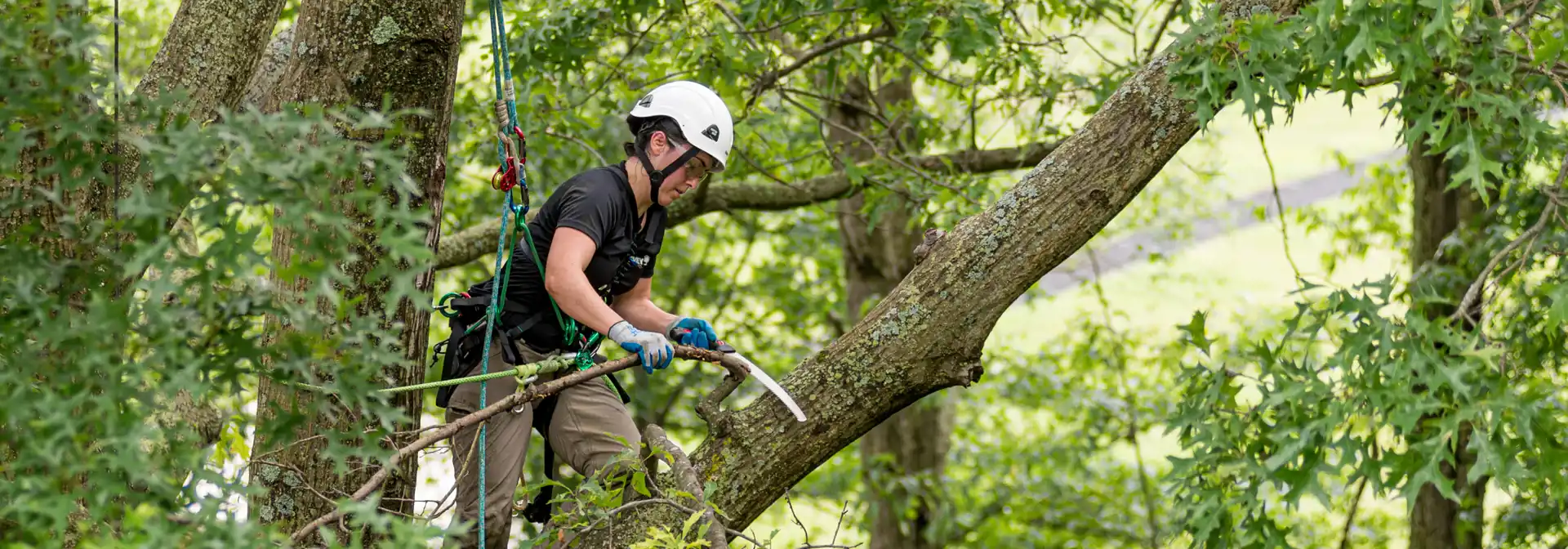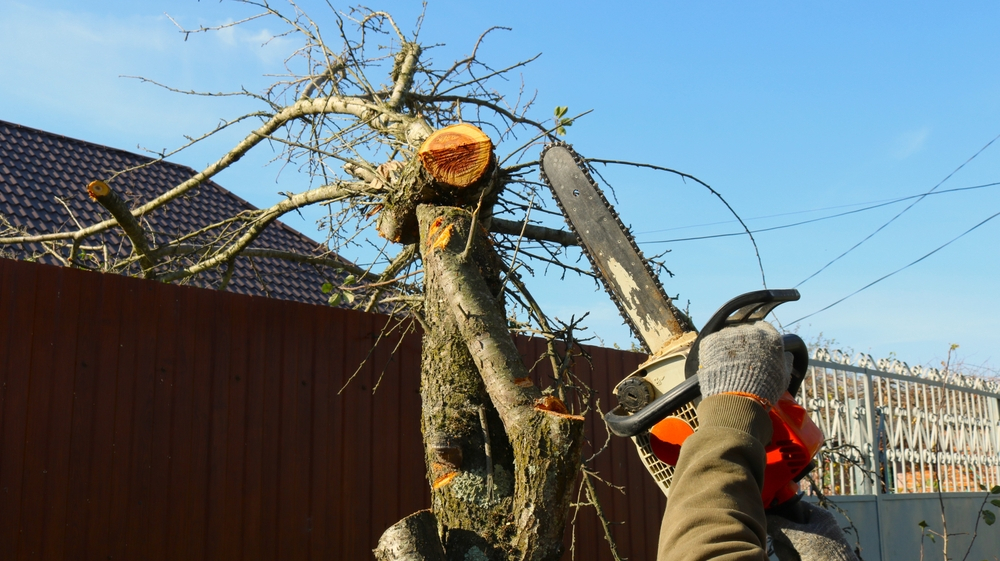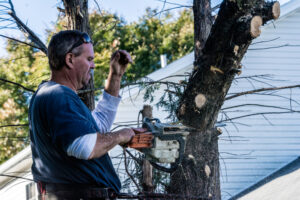The Truth About DIY Tree Trimming: Pros and Cons to Consider
In recent years, the allure of DIY projects has extended to tree trimming for many homeowners. The idea of saving money and taking control of one’s landscape can be enticing, but it’s essential to grasp the full scope of what DIY tree trimming entails. This comprehensive guide delves into the pros and cons of this practice, offering detailed insights to help homeowners make informed decisions about their tree care.
What is DIY Tree Trimming?
DIY tree trimming, simply put, is the act of homeowners pruning or trimming their trees without professional assistance. It’s a hands-on approach to tree maintenance that appeals to those seeking cost-effective solutions or those who enjoy managing their own outdoor spaces. The practice involves the use of various tools and techniques to remove dead or overgrown branches, shape the tree canopy, and promote healthy growth. However, before delving into the realm of DIY tree care, it’s crucial to understand both its advantages and potential drawbacks.

Pros of DIY Tree Trimming
One of the most prominent benefits of DIY tree trimming is the cost savings it offers. Hiring a professional arborist can be a significant expense, particularly for routine tree maintenance tasks such as pruning and trimming. By taking on the job yourself, you can bypass service fees and allocate those funds elsewhere in your budget. Additionally, DIY tree trimming allows you to spread the cost of equipment purchases over time, further reducing the financial burden.
Another advantage is the flexibility that DIY tree trimming provides. Unlike scheduling appointments with arborists, which may require coordination and waiting periods, DIY allows you to dictate the timeline. Whether you prefer to tackle the task on weekends or spread it out over several days, the choice is yours. This flexibility can be especially beneficial for homeowners with busy schedules or unpredictable weather conditions.
Moreover, DIY tree trimming empowers homeowners to control the outcome of the pruning process fully. You have the freedom to shape your trees according to your aesthetic preferences and address specific concerns without relying on someone else’s interpretation of your vision. Whether you’re aiming for a more symmetrical canopy, improving sunlight penetration, or removing branches that pose safety hazards, DIY allows you to achieve your desired results.
Cons of DIY Tree Trimming
Despite its appeal, DIY tree trimming comes with inherent risks that must be carefully considered. Foremost among these is the issue of safety. Working with sharp tools at heights poses significant hazards, particularly for those without proper training or experience. Falls from ladders or improper tool usage can result in serious injuries, making safety precautions paramount. Additionally, certain tree species may present additional risks due to factors such as brittle branches or thorns, further emphasizing the importance of caution.
Furthermore, a lack of knowledge and expertise can lead to unintentional harm to both trees and property. Improper pruning techniques can weaken the tree’s structure, leaving it vulnerable to disease and pests. Common mistakes such as topping, lion’s tailing, or excessive pruning can have long-term consequences for tree health and aesthetics. Additionally, misguided attempts at tree trimming may result in damage to nearby structures, such as homes, fences, or utility lines, leading to costly repairs and potential liability issues.
Tips for Safe and Effective DIY Tree Trimming
To mitigate the risks associated with DIY tree trimming, homeowners should adhere to several key principles:
- Education: Take the time to research proper tree care practices and familiarize yourself with the species of trees in your yard. Understanding basic concepts such as tree biology, pruning techniques, and safety protocols will empower you to make informed decisions and avoid common pitfalls.
- Equipment: Invest in high-quality tools and safety gear, including pruning shears, loppers, gloves, and sturdy footwear. Ensure that all equipment is properly maintained and used according to manufacturer guidelines to minimize the risk of accidents and injuries.
- Partnership: Whenever possible, enlist the help of a trusted partner to assist with tasks that require climbing or heavy lifting. Having an extra set of hands can improve efficiency and safety by providing support and assistance when needed. Communication and teamwork are essential for coordinating activities and ensuring that everyone remains safe throughout the process.
- Professional Consultation: Recognize your limitations and know when to seek professional assistance, particularly for complex or hazardous tree trimming projects. Consulting with a certified arborist can provide valuable insights and recommendations tailored to your specific needs and circumstances. Arborists can assess the health and condition of your trees, identify potential risks, and develop a customized pruning plan to achieve your desired outcomes safely and effectively.
By following these guidelines, homeowners can minimize the risks associated with DIY tree trimming and achieve professional-quality results with confidence and peace of mind.

Alternatives to DIY Tree Trimming
For homeowners hesitant to undertake DIY tree trimming, several alternatives exist:
- Professional Arborist Services: While it may involve a higher upfront cost, hiring a certified arborist ensures expert care and minimizes the risk of damage to trees and property. Arborists possess specialized training and experience in tree care, allowing them to assess the health and condition of trees accurately and implement appropriate pruning techniques. Additionally, arborists can provide ongoing maintenance services to keep your trees healthy and thriving for years to come.
- Community Volunteer Programs: Some communities offer volunteer programs or workshops focused on tree care, providing opportunities for hands-on learning and collaboration with neighbors. These programs may be organized by local government agencies, nonprofit organizations, or community groups with a shared interest in environmental stewardship. Participating in volunteer tree planting or pruning events can foster a sense of community pride and engagement while contributing to the health and beauty of public spaces.
- City Services: Check with local government agencies to inquire about tree maintenance services or resources available to residents. Many municipalities offer tree pruning, removal, and planting services to help maintain public safety and enhance the urban forest. Additionally, some cities may provide subsidies or incentives for homeowners to plant and care for trees on their properties, promoting sustainability and environmental conservation efforts at the local level.
Conclusion
In conclusion, DIY tree trimming offers both advantages and challenges for homeowners seeking to manage their tree care independently. While the potential for cost savings and personal control over the process are appealing, safety concerns and the risk of unintentional damage underscore the importance of careful consideration. By educating oneself, prioritizing safety, and knowing when to seek professional assistance, homeowners can make informed decisions about their tree maintenance practices. Remember, the health and longevity of your trees are worth the investment of time, effort, and resources. Whether you choose to tackle tree trimming on your own or enlist the help of a professional, the key is to approach the task with respect for nature and a commitment to sustainable stewardship of our shared environment.
Tree Trimming Richmond
(804) 533-3943
https://treetrimmingrichmond.com/

